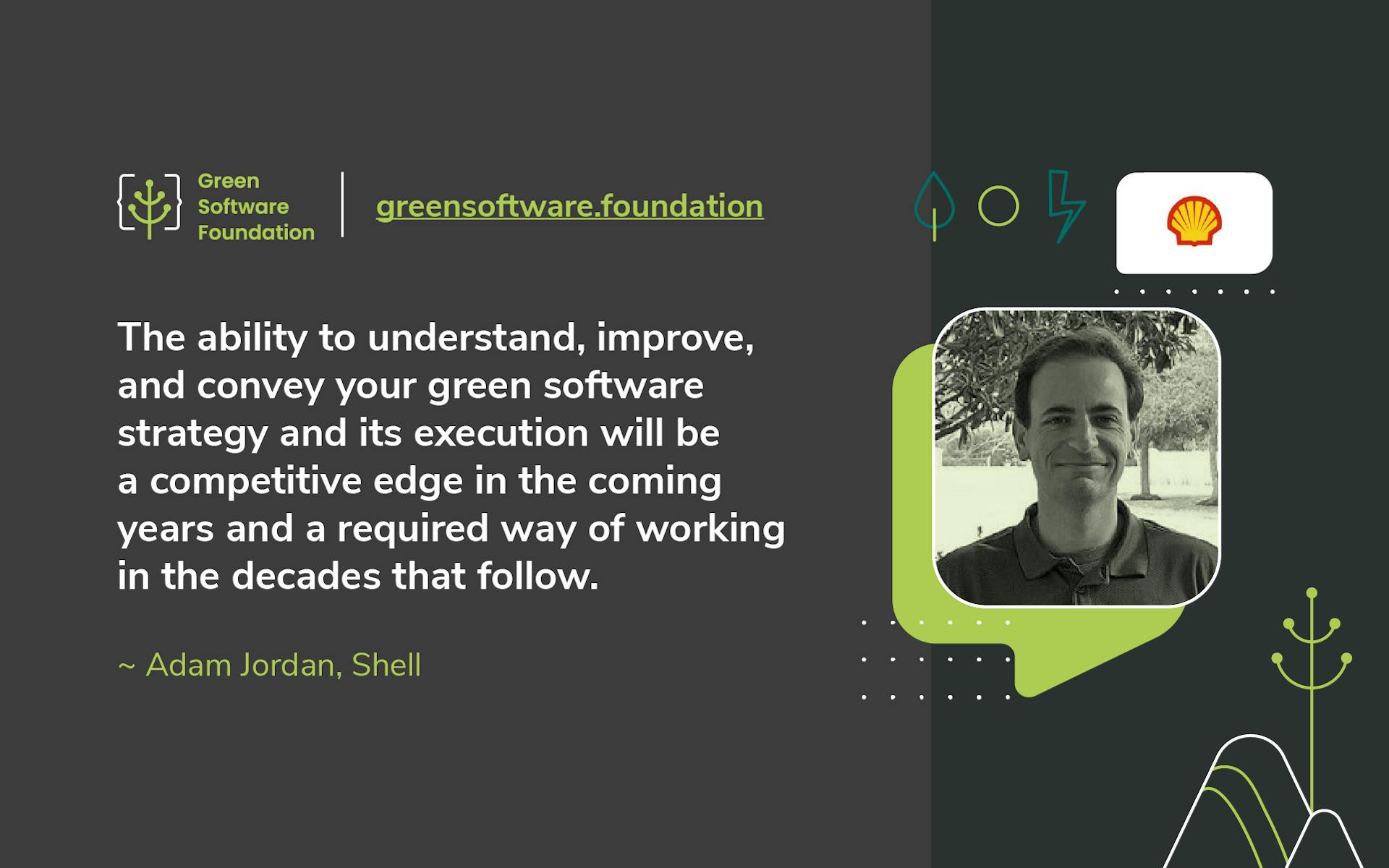Most of us know Shell as an energy company. How does software come into the picture?
Shell is both a leader in the energy industry and a leader of the energy transformation, moving towards clean and renewable energy sources by implementing Shell’s Powering Progress strategy.
As a leader in the energy industry, it’s very important that we’re not only building solutions to meet the needs of the future energy business, but that we’re also understanding the impact of the solutions themselves. The ability to build solutions that are aware of their energy and carbon impact allows us to build solutions with a complete picture of what our impact is and how we can continue to improve it. That makes Green Software a key element of all future software solutions at Shell. Partnering with the Green Software Foundation allows us to make sure we’re bringing the latest standards, practices, and guidance into our team, and contribute back our learnings and input as a company looking to implement at a large scale.
Tell us about your role at Shell as a Distinguished Software Engineer and your journey to GSF
Distinguished Software Engineer is a role and designation on the top of our technical career ladder for software engineers. I achieved this through well over a decade of delivery, or helping teams deliver, high-value software solutions and improving the overall landscape for software delivery at Shell.
In practice, I spend about half my time as a technical delivery leader such as architect, delivery lead, or whatever fits best for the given team. The other half is spent finding ways to mature software delivery as a whole such as in security or green software.
My role allows me the opportunity to keep an eye on where the software industry is moving, what Shell’s needs are, and how we can tie them together to meet Shell’s strategic needs.
Shell is now deep in energy transition. We’ve been leveraging some capabilities to build ‘smarter’ software for a few years now, which includes understanding our energy and carbon footprint. Earlier this year, the announcement at Microsoft Build gave us the awareness of the Green Software Foundation. It seemed to be a great alignment with where Shell both needed and wanted to go. In the months since, we've been building the engagement, relationships, and strategy to start bringing green software into the core of our development and operational approach.
What do you expect to achieve by working with the GSF and in green software in general?
For Shell, GSF provides a natural link into industry direction, standards, tooling, and guidance that we can and will adopt in Shell. It helps us make smarter choices of how we invest by leveraging industry standards wherever possible, and avoiding custom solutions from internal development or by standalone vendors.
For GSF, our strategic need for green solutions will allow us to be an active member in GSF to take learnings from our application of GSF deliverables and contribute our knowledge as a company making an energy transition themselves.
What obstacles do you see to popularising green software? How do you think we can overcome them?
I don’t see it as something that needs popularising as much as a core element of solution delivery in the future. If you want to be a professional engineer and professional company, you need to understand the impacts of your solutions. The ability to understand, improve, and convey your green software strategy and its execution will be a competitive edge in the coming years and a required way of working in the decades that follow.
Any other matters you would like to share with us about green software and sustainability?
It’s important to understand that green software is a young and evolving area of software development and delivery. That means that the path will be fuzzy, and many solutions and products will come and go over the coming years.
The ability to unify our efforts through an organisation like GSF is not just a means to expedite our journey to get to that future state, but also to avoid loss of time and investment along the way. The broader the cooperation across industry and standardisation of practices and tools, the more productive and effective we all can be.
This article is licenced under Creative Commons (CC BY 4.0)

